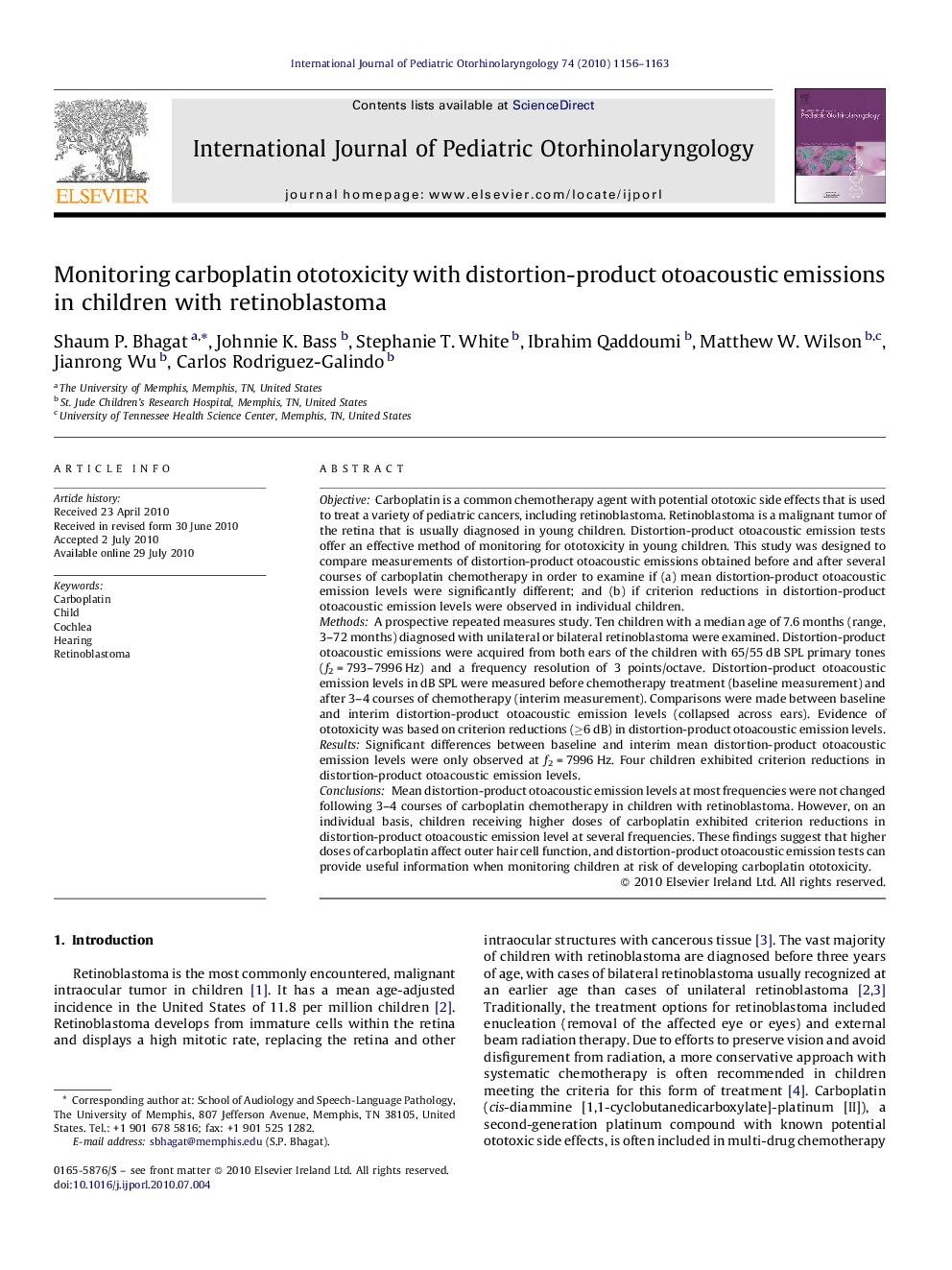| Article ID | Journal | Published Year | Pages | File Type |
|---|---|---|---|---|
| 4113770 | International Journal of Pediatric Otorhinolaryngology | 2010 | 8 Pages |
ObjectiveCarboplatin is a common chemotherapy agent with potential ototoxic side effects that is used to treat a variety of pediatric cancers, including retinoblastoma. Retinoblastoma is a malignant tumor of the retina that is usually diagnosed in young children. Distortion-product otoacoustic emission tests offer an effective method of monitoring for ototoxicity in young children. This study was designed to compare measurements of distortion-product otoacoustic emissions obtained before and after several courses of carboplatin chemotherapy in order to examine if (a) mean distortion-product otoacoustic emission levels were significantly different; and (b) if criterion reductions in distortion-product otoacoustic emission levels were observed in individual children.MethodsA prospective repeated measures study. Ten children with a median age of 7.6 months (range, 3–72 months) diagnosed with unilateral or bilateral retinoblastoma were examined. Distortion-product otoacoustic emissions were acquired from both ears of the children with 65/55 dB SPL primary tones (f2 = 793–7996 Hz) and a frequency resolution of 3 points/octave. Distortion-product otoacoustic emission levels in dB SPL were measured before chemotherapy treatment (baseline measurement) and after 3–4 courses of chemotherapy (interim measurement). Comparisons were made between baseline and interim distortion-product otoacoustic emission levels (collapsed across ears). Evidence of ototoxicity was based on criterion reductions (≥6 dB) in distortion-product otoacoustic emission levels.ResultsSignificant differences between baseline and interim mean distortion-product otoacoustic emission levels were only observed at f2 = 7996 Hz. Four children exhibited criterion reductions in distortion-product otoacoustic emission levels.ConclusionsMean distortion-product otoacoustic emission levels at most frequencies were not changed following 3–4 courses of carboplatin chemotherapy in children with retinoblastoma. However, on an individual basis, children receiving higher doses of carboplatin exhibited criterion reductions in distortion-product otoacoustic emission level at several frequencies. These findings suggest that higher doses of carboplatin affect outer hair cell function, and distortion-product otoacoustic emission tests can provide useful information when monitoring children at risk of developing carboplatin ototoxicity.
